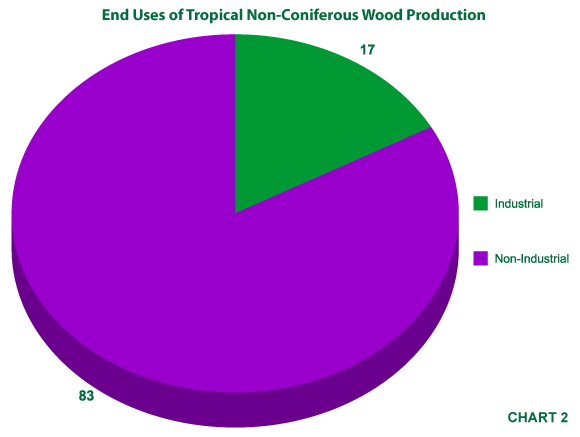One of the strongest woods in the world
Environmentally friendly
Low maintenance
Up to a Class A fire rating for flame spread
Termite, Mold & Fungi resistant
No knots
High scratch & slip resistance
Can outlast composite material
Twice as strong as Oak
Time proven on many commercial projects
Better than teak
Great for docks, gazebos, benches, & tables
Worldwide shipping is available
Large selection of stock sizes
Up to 20 feet long
Up to 6x6 timbers
We custom mill to your dimensions
Comparably priced with composite decking choices
Available with hidden fastening system
Our Environmental Concerns
Forests around the world are under increasing pressure to satisfy the needs of people. Forests are home to many plant and animal species, including humans. They perform the important function of converting carbon dioxide to oxygen. Trees are also the source of the most abundant, environmentally friendly and a useful material known to man as WOOD. It is the most widely used fuel for cooking and heating, and it is the basic material for shelter.
Tropical forest are under particular pressure as they are located in developing countries where many people are struggling on a daily basis merely to survive. You may have heard some claims about the threats facing the rainforests and about people who's responsible. Let's look at the truth, you may be surprised!
Some Facts About Tropical Deforestation
CHART 1: Even according to a study commissioned by GREENPEACE in Germany, "forestry" is responsible for an average of only about six percent (.06) of forest depletion in tropical countries. By far, the major causes of deforestation in the tropics are poverty, population pressures and shifting agriculture. When poverty and expanding populations put a strain on existing clear land, forested land is the target for clearing and development.

CHART 2: Only about seventeen percent (.17) of total tropical roundwood production is used for "industrial purposes." These uses include construction and furniture manufacturing, etc. The remaining eighty-three percent (.83) is used for fuelwood and other non- industrial purposes. Countries as diverse as Kenya, Indonesia, and Nicaragua still depend on wood for the majority of their total energy needs.

CHART 3: Of the industrial wood and wood products (logs, sawnwood, veneer and plywood, etc.) produced in tropical countries, approximately 81.5% (.815) is consumed in those countries. Only about 18.5% (.185) enters into international trade. Even if the entire international timber trade were to stop completely, there would still remain 98.9% of the deforestation problem left to address.

CHART 4: U.S. imports of tropical wood and wood products in 1993 made-up approximately four percent (.04) of the total international market. Japan was, by far, the leading consumer of these products (40%), Followed by the E.U. (European Union) (19.5%), Taiwan (13%), South Korea (13%), and the People's Republic of China (11%). The vast majority of U.S. imports are of plywood and other value-added products.

CHART 5: The level of responsibility of the U.S. tropical timber trade in rainforest loss can be determined by multiplying the total role of "forestry" production that is for "industrial" purposes (.17) X the percentage of "industrial" wood that enters into international trade (.185) X the U.S. share of the total international tropical timber market (.04). The resulting number is .0000754 (or seven and a half one-thousandths of one percent)!

Although the wood and wood products industry is a very small part of the problem, it can be a large part of the solution.
A significant proportion of the billions of dollars this international market represents make its way back to the forests and provides resources to address the real problems facing the forests; poverty & population pressures.
| Country | Total Employed | Percent of Export | Value of Forest Products Exports |
| Bolivia | 30,000 Families | 50% | $112 Million |
| Brazil | --------------- | 3% | $1.5 Billion |
| Ghana | 75,000 | 30% | $93 Million |
| Malaysia | 200,000 | 9% | $5 Billion |
| Indonesia | 4,000,000 | 16% | $6.4 Billion |
| USA | 1,613,000 | 4% | $18 Billion |
| Cameroon | 50,000 | 12% | $200 Million |
Good Markets for wood & wood products will help save the forest. A thriving international market provides an economic reason to carefully manage them. Bans & boycotts of tropical timber products are counterproductive to the purported goal of saving the rain forest in that they reduce the value of the forested land. If we stop buying these products, we would remove the incentive to manage the forests and we would actually encourage their conversion to other uses, which is what we need to avoid. The land with trees MUST be more valuable than the land without them.
Save the Rainforests! Buy Tropical Wood Products from Responsible Suppliers!!!
- Study by the institute for Weltwirtschaft(TFW) Kiel for Greenpeace E. V. Hamburg 1992.
- Economic Linkages between the International Trade in Tropical Timber and the Sustainable Management of Tropical Forest London Environmental economics centre 1992.
- ITTO 1994 Report
- Calculation
